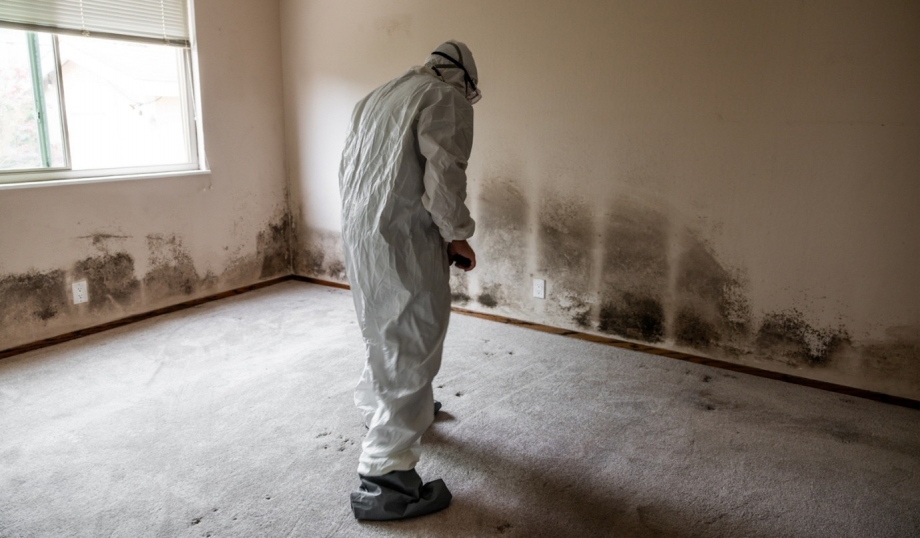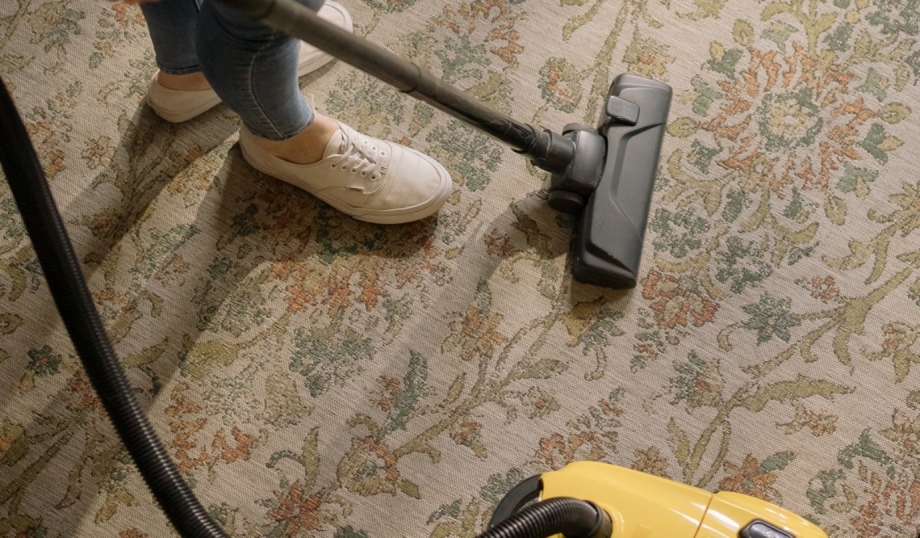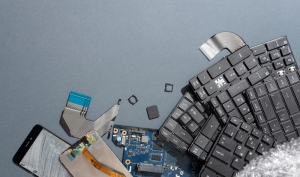Mold in carpet is more than just an eyesore. It is a serious concern for the health of your home and your family. Whether caused by a leak, flood, or lingering dampness, mold and mildew thrive in carpet fibers that retain moisture. If left untreated, they can lead to unpleasant odors, discoloration, and even respiratory issues. Safe and effective carpet cleaning methods can make a significant difference in removing mold and restoring the health of your living space.
To get mold out of carpet, remove the source of moisture, treat the affected area with antifungal solutions like white vinegar or baking soda, and ensure the carpet is completely dried to prevent regrowth. Understanding this will help you take immediate action, protect your home environment, and reduce the risk of mold returning in the future. From natural cleaning carpet options to expert advice for severe cases, you will find practical steps to deal with mold in carpet with confidence.
Does Your Carpet Have Mold?

Mold in carpet can be sneaky. In many cases, it develops out of sight and goes unnoticed until it begins causing health issues or becomes visibly obvious. Unlike hard surfaces, carpet can trap moisture deep within its fibers, making it a prime environment for mold and mildew to flourish.
The first and most noticeable sign is usually a musty, damp smell that lingers in the room no matter how much you clean or air it out. Mold emits microbial volatile organic compounds (MVOCs), which are responsible for that earthy odor. If your carpet continues to smell unpleasant after vacuuming or shampooing, mold could be growing underneath.
Here are additional signs that your carpet may have mold:
- A musty, damp smell that doesn't go away
- Discoloration or dark patches on the carpet
- Allergic reactions or respiratory issues indoors
- Dampness underfoot that lingers even after drying
If you notice one or more of these symptoms, it's important to investigate further before the issue escalates.
Identifying Mold in Carpets
Confirming the presence of mold requires a closer look. Visual inspection, smell, and physical signs are a good start, but in some cases, testing may be necessary. Mold often begins to grow on the underside of the carpet, hidden from view, especially if the padding has absorbed moisture.
To identify mold in your carpet:
- Lift a small corner of the carpet to check the underside and padding. If you see fuzzy, discolored patches—often black, green, white, or gray—mold is likely present.
- Look for green, white, or black patches. These can appear on the carpet surface, backing, or the padding beneath.
- Use a mold testing kit if you're unsure. These kits are widely available and can help detect mold spores even if you don't see visible signs yet.
- Observe any health symptoms among household members. If someone begins experiencing unexplained allergy symptoms, sinus congestion, coughing, or skin irritation while in a specific room, that can be an important clue.
If mold is confirmed, act quickly. The longer it stays, the deeper it penetrates the fibers, padding, and even the subfloor.
Why Does Mold Grow on Carpet?
Carpet offers the ideal environment for mold to thrive. It is warm, absorbent, and frequently exposed to organic debris like food particles, dirt, and pet dander—everything mold needs to survive. Add moisture to that mix, and you have a recipe for rapid growth.
Mold often grows in carpet due to:
- High indoor humidity or condensation buildup from poor ventilation
- Water damage from leaks, spills, or flooding
- Carpets installed in damp areas such as basements, bathrooms, or laundry rooms
- Wet shoes, umbrellas, or pets tracking in moisture that isn't cleaned or dried promptly
Carpet fibers retain moisture, and when the area stays damp for longer than 24 to 48 hours, mold spores in the air can latch onto the fibers and begin reproducing. Humid conditions and poor airflow accelerate this process.
Regularly vacuuming and keeping your carpets dry can help, but even the cleanest homes can experience mold if moisture goes unchecked. Prevention always starts with moisture control.
Why Is Carpet Mold a Serious Problem?

Carpet mold is more than a cosmetic issue—it can negatively impact both your health and your home’s structure. Because carpet covers large areas and lies directly above padding and flooring, mold can spread quickly if left untreated, going deeper than the surface.
Here’s why it’s a serious concern:
- Trigger allergies and asthma: Mold releases spores that can irritate your lungs, causing sneezing, wheezing, and breathing difficulty—especially for those with preexisting conditions.
- Cause respiratory irritation or chronic sinus issues: Prolonged exposure can lead to persistent coughing, congestion, or even nosebleeds.
- Release mycotoxins harmful to pets and humans: Some types of mold produce toxic substances that can affect the immune system, skin, and neurological health.
On top of the health risks, mold in carpet can:
- Weaken carpet fibers and padding, reducing the lifespan of your flooring
- Stain the surface and cause unpleasant odors that are difficult to eliminate
- Penetrate into the subfloor, requiring costly replacements or repairs
Because mold can continue to spread out of sight, what appears as a small patch on the surface could already be a much larger problem underneath. Acting promptly is essential to protect both your indoor air quality and your home’s foundation.
What Should I Consider Before I Attempt to Get Mold Out of My Carpet?
Before jumping into carpet cleaning or mold treatment, it's important to understand the extent of the problem and whether DIY methods will be enough. Mold removal from carpet is not one-size-fits-all. It depends on several factors that affect both the success and safety of the process.
Here’s what to assess first:
- Extent of Mold:
If the moldy area is small and hasn’t spread to the padding or subfloor, you may be able to handle it with DIY methods. However, if the mold covers a large portion of the carpet, has spread beneath, or continues to return after cleaning, professional intervention is likely needed.
- Source of Moisture:
Mold cannot be permanently removed if the source of moisture remains. Check for leaks, condensation, or high humidity in the room. Fix plumbing issues, seal windows, or install a dehumidifier before cleaning the carpet.
- Material Type:
Some carpets, particularly those made from wool or natural fibers, require gentler treatments or professional cleaning techniques. Using the wrong method can damage the carpet or make the mold problem worse.
- Ventilation:
Always work in a well-ventilated space when removing mold. Open windows, run fans, or use air purifiers to reduce airborne spores. Proper airflow not only keeps you safe but also helps dry the area thoroughly after cleaning.
You should also wear protective gear such as gloves, a mask, and goggles during the process to avoid inhaling mold spores or exposing your skin to potential irritants. If you're dealing with recurring mold, strong odors, or health symptoms during removal, it may be time to consider professional carpet mold remediation.
DIY Carpet Mold Removal Methods
Removing mold from carpet can be done at home using a few natural and commercially available solutions. While these DIY methods are most effective for small, early-stage mold problems, they can help reduce mold growth and restore freshness to your carpet if used correctly and consistently. Here are some of the most effective remedies.
- White Vinegar
White vinegar is a widely recommended natural antifungal and antibacterial solution. It penetrates the carpet fibers and helps break down mold colonies on contact.
Steps:
- Pour undiluted white vinegar into a clean spray bottle
- Spray generously over the affected area, making sure to reach deep into the fibers
- Let the solution sit for at least one hour to allow the vinegar to disinfect thoroughly
- Blot the area with a dry, absorbent cloth or towel
- Allow the carpet to air dry completely, using a fan or dehumidifier to speed up drying
You can repeat this process as needed until the odor and discoloration subside.
- Non-Iodized Salt
Salt naturally draws moisture out of materials and can help inhibit the spread of mold by drying out the affected area. It’s a useful, low-cost remedy for spot treatment.
Steps:
- Mix non-iodized salt with a small amount of water to create a thick paste
- Apply the paste generously to the moldy section of the carpet
- Allow it to sit overnight, giving it time to dehydrate mold spores
- In the morning, vacuum the area thoroughly to remove the dried salt residue
For best results, use this method in combination with sunlight or added airflow to maximize drying.
- Clove Oil
Clove oil is a strong natural fungicide that kills mold spores and helps prevent them from returning. A little goes a long way, and it should always be diluted before use.
Steps:
- Mix ¼ teaspoon of clove oil with 1 liter of water in a spray bottle
- Lightly mist the affected area, ensuring even coverage without over-saturating
- Allow the solution to sit for 15 to 20 minutes to activate its antifungal effects
- Gently scrub the carpet with a soft-bristled brush if needed
- Blot the area dry with a clean towel and increase ventilation until fully dry
Repeat weekly for ongoing protection in mold-prone zones.
- Baking Soda
Baking soda is one of the most accessible household remedies for mild mold issues. It absorbs moisture, neutralizes odors, and can be paired with vinegar for added cleaning power.
Steps:
- Sprinkle a generous layer of baking soda over the affected carpet area
- Let it sit overnight so it can absorb excess moisture and mold odors
- Vacuum thoroughly the next morning to remove all residue
- For deeper treatment, combine baking soda with vinegar and apply the mixture as a paste
This method is gentle on carpets and safe for use in households with pets or children.
- Special Cleaning Agents
There are a number of commercially available mold removers formulated specifically for carpet cleaning. These products often contain antifungal agents and disinfectants that penetrate deep into fibers to kill mold and mildew at the root.
When selecting a product:
- Choose one that is labeled for mold and mildew removal on carpets
- Look for EPA-approved formulations to ensure safety and effectiveness
- Follow all manufacturer instructions carefully
- Always wear gloves and ventilate the space when using chemical cleaners
Professional-grade mold removal sprays can be especially helpful when natural remedies are not strong enough.
How to Get Mold Out of Carpet for Good

Removing mold is only half the battle. To prevent it from coming back, you need to ensure the carpet and surrounding area are completely free of moisture and organic buildup.
Here’s how to eliminate mold for good:
- Combine natural remedies with a HEPA vacuum to remove spores
Use a vacuum with a high-efficiency particulate air (HEPA) filter to capture and contain tiny mold spores from the carpet surface and surrounding areas. - Use a carpet steam cleaner to deep clean the fibers
Steam cleaning helps sanitize carpet fibers by applying high heat and extracting deeply embedded contaminants. - Always dry the area thoroughly using fans and dehumidifiers
Moisture is the root of mold. Position fans to circulate air and run a dehumidifier to bring humidity levels down. - Dispose of any padding or underlay that has been contaminated
Once mold penetrates the carpet backing or padding, removal is often the only option. Moldy padding can reintroduce spores to the clean surface above.
Consistent inspection and preventative measures will go a long way in keeping mold from reappearing.
Precautions and Safety Before Removing Mold
Cleaning mold requires proper precautions to protect your health and prevent cross-contamination in your home.
Tips to Prevent Mold Regrowth
After removal, take proactive steps to reduce moisture and maintain a healthy carpet:
- Dry carpets within 24 to 48 hours after spills or floods
Immediate drying is critical to prevent mold from forming. - Use dehumidifiers in humid climates
Keep indoor humidity levels below 60 percent. - Ensure proper ventilation in rooms with carpet flooring
Open windows, install exhaust fans, and promote airflow. - Clean regularly to prevent dust and spore accumulation
Vacuum with a HEPA filter and use mild disinfectants on a routine basis.
Precautions Before Removing Mold
Protect yourself and your home by following these safety steps:
- Wear gloves, a mask, and safety goggles
Mold spores can cause irritation and should never be inhaled. - Isolate the room to prevent spores from spreading
Close doors and seal vents if possible. - Avoid mixing chemicals—stick to one cleaning method per session
Combining cleaners like vinegar and bleach can create toxic fumes. - Never attempt to clean mold if you have respiratory conditions
Consult a professional instead, especially if symptoms worsen during cleaning.
When to Call a Professional

While DIY solutions can be effective for minor cases, there are times when calling a professional is the best—and safest—option.
The Importance of Professional Mold Removal and Carpet Cleaning
Professionals have specialized tools and training to safely handle large or advanced mold problems. They use high-powered HEPA vacuums, moisture meters, and antimicrobial treatments to eliminate mold at its source, including beneath the carpet and into the subfloor. Their methods also reduce the chance of regrowth and airborne contamination.
Professional Carpet Cleaning and Mold Removal Near You
When searching for local mold remediation services, keep these criteria in mind:
- Certifications such as IICRC (Institute of Inspection Cleaning and Restoration Certification) or NAMRI (National Association of Mold Remediators and Inspectors)
- Positive customer reviews that highlight reliable results and quality service
- Eco-friendly cleaning options for homes with children, pets, or sensitive individuals
Many services offer free assessments or consultations to evaluate the mold situation before treatment.
Can Mold in Carpet Make You Sick?
Yes, mold exposure can lead to a wide range of health problems—many of which are mistaken for allergies or colds. Mold releases spores into the air that can irritate your lungs, skin, and sinuses.
Symptoms of mold exposure from carpet include:
- Asthma flare-ups, especially in children and those with preexisting conditions
- Coughing, sneezing, or nasal congestion that worsens indoors
- Skin irritation, rashes, or hives in sensitive individuals
- Fatigue and headaches, often unexplained and persistent
People with compromised immune systems, older adults, and young children are especially vulnerable. If symptoms improve when away from home, mold may be the hidden trigger.
How Long Does It Take for Mold to Grow on Wet Carpet?
Mold doesn’t waste time. It can begin developing on wet carpet within just 24 to 48 hours of moisture exposure. Even if the surface feels dry, mold can grow underneath where it's dark and warm.
The faster you act, the better your chances of stopping mold before it spreads:
- Dry the carpet thoroughly within 24 hours of any spill or flood
- Remove padding or underlay if it has stayed wet too long
- Use fans and dehumidifiers immediately, especially in enclosed or carpeted spaces
Waiting too long gives mold the opportunity to multiply, turning a small issue into a larger, more expensive problem.
Take Action Before Mold Becomes a Bigger Problem
Mold in carpet isn’t just an inconvenience, it’s a health hazard and a warning sign that your indoor environment may need closer attention. Fortunately, with the right knowledge and habits, you can tackle minor cases yourself and prevent new ones from forming. Regular carpet cleaning, moisture control, and airflow are the foundation of a mold-free home.
Your floors are one of the most used and often overlooked surfaces in your home. Protecting them from mold is one more way to protect your health, your family, and your peace of mind.






